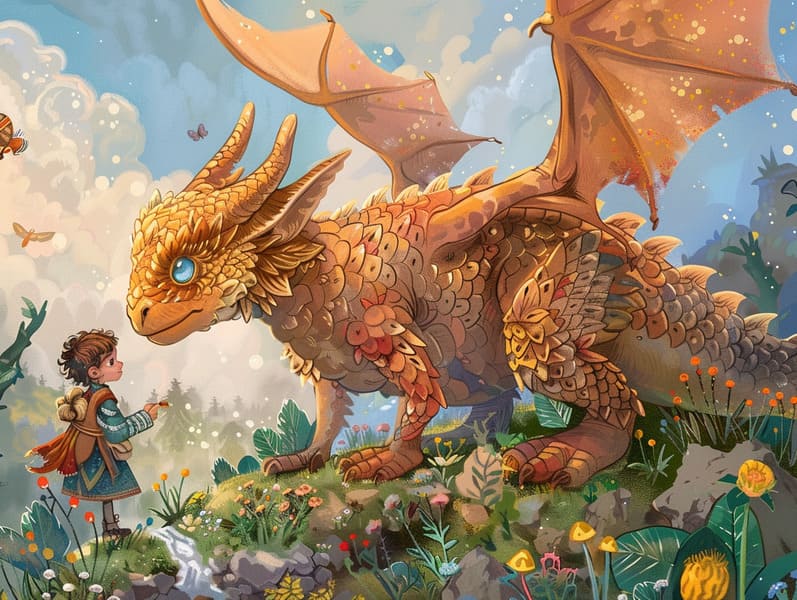
Famous fairy tales have enduring presence. These narratives have been passed down from one generation to the next centuries before they were ever documented. They sprang from a variety of backgrounds, including Asian traditions. They were initially narrated among elders, often carrying themes and messages related to the societal norms and beliefs of the time.
The renowned Brothers Grimm, Jacob and Wilhelm (the Grimm brothers), were among the first to compile and release many of these beloved stories. Their compilation, "Grimm's Fairy Tales," included stories like "The Little Glass Slipper," "The Story of Hansel and Gretel," and "The True Story of Snow White," which have since become pillars in the world of children's fairy tales. Similarly, Andersen's whimsical stories, such as "The Mermaid's Tale," and "The Duckling that Could," have gained the love worldwide, guaranteeing their place in the pantheon of timeless fairy tales.
Though they are old, these stories remain as relevant as ever, especially as kids' bedtime tales. These fantastical tales are now available in numerous formats, including beautifully illustrated books, captivating animations, and web-based fairy tales.
Their lasting appeal can be traced to several enchanting factors:
Moral Lessons: Classic fairy tales often illustrate important moral lessons. Fairy tales like "The Story of the Boy Who Cried Wolf" teach the importance of sincerity, while "The Race of the Tortoise and the Hare" emphasize the merits of steadfastness and modesty. These tales offer young ones clear distinctions between moral and immoral, helping to shape their moral compass in a subtle yet important way.
Empathy and Understanding: Timeless fairy tales frequently present individuals facing obstacles and hardships, stimulating young readers to resonate with their struggles and encourage their triumphs. For instance, "The Tale of Beauty and the Beast" emphasizes the value of looking beyond appearances to perceive the true character of a character, fostering warmth and perception.
Cultural Perception: Many traditional fairy tales are imbued with the cultural contexts from which they blossomed. Exploring these stories can provide captivating looks into different ways of life, advancing a sense of global respect and acknowledgment.
Imagination and Creativity: The mythical elements in traditional fairy tales—magical kingdoms—inspire children’s fantasies. These stories take readers to enchanted realms, enlivening creative ideas and a sense of enchantment that lasts a lifetime.
Ancient fairy tales are not only whimsical but also instructive. They serve as captivating tools in promoting various mind and heart abilities in little ones. When fairy tales are voiced, they promote speech development by offering new vocabulary and elaborate sentence structures. This practice also improves auditory skills and mental focus, as children remain attentive, eager to see what happens next.
Furthermore, discussing the themes and characters of timeless fairy tales can nurture analytical skills and thought processes. Young readers are shown to notice patterns, forecast, and understand cause and effect. These examinations also help children express their thoughts and feelings, contributing to their emotional intelligence.
In today’s electronic age, the abundance of online storybooks has made these narratives more available than ever. Internet resources and online apps feature vast collections of ancient fairy tales that can be seen or played anytime, anywhere. Fairy tales voiced are particularly common, sharing an engaging way for little ones to enjoy these mesmerizing stories. Read-aloud stories and narrated videos take characters and settings to life, often complemented by delightful musical scores and musical scores that raise the tale experience.
The timeless fascination of classic fairy tales lies in their ability to adapt to modern society while preserving their essential themes. Contemporary revisions of these fairy tales often highlight more representative characters and modern settings, making them relevant to today’s audience. However, the basic principles of spirit, compassion, and rightness remain unchanged, continuing to touch listeners of all ages.
Fairy tales also offer a sense of reassurance and understanding. They yield a coherent narrative with a straightforward beginning, middle, and end, often winding up with the ending of conflicts and the triumph of rightness over wrongness. This assuredness can be encouraging for young readers, bringing a sense of solidity in an ever-changing world.
Traditional fairy tales continue to fascinate and edify new generations, maintaining their attraction and value in modern society. As kids' bedtime tales, they impart upon a perfect blend of charm and understanding, nourishing moral values, empathy, and creativity. The existence of digital storybooks and the prevalence of fairy tales recited guarantee that these read more timeless tales remain within reach to new generations.
By continuing and sharing these narratives, we continue to cherish the rich tapestry of legends and cultural heritage. Whether you are reading a vibrantly illustrated book, experiencing a internet library, or listening via an read-aloud story, the spell of old fairy tales is always within reach. These stories illustrate of the undying power of storytelling and its ability to gather us across time and space.
No matter if you are reading a gorgeously illustrated book, accessing a online collection, or listening through an audio story, the appeal of famous fairy tales is always within reach.
These narratives illustrate of the eternal power of storytelling and its ability to bring us together across generations and cultures, weaving a spell that charms and informs alike.
Comments on “The Emergence of Best Fairy Tales with Its Timeless Grace.”